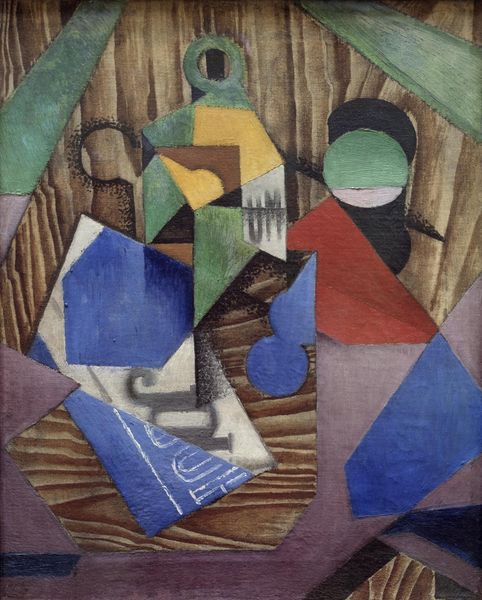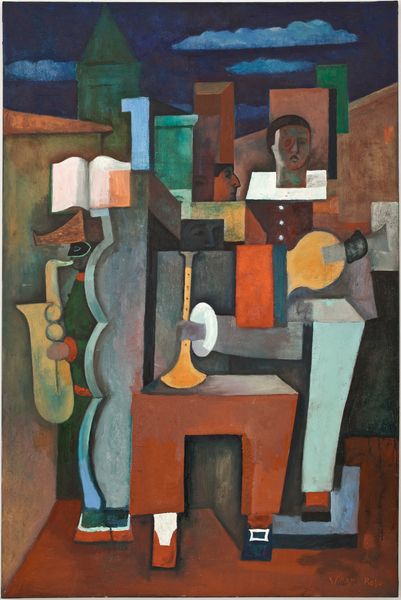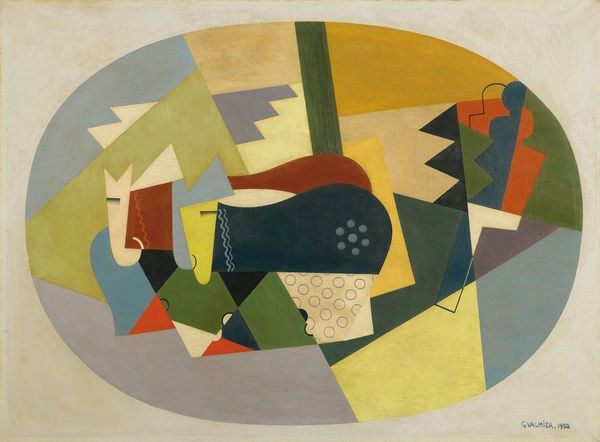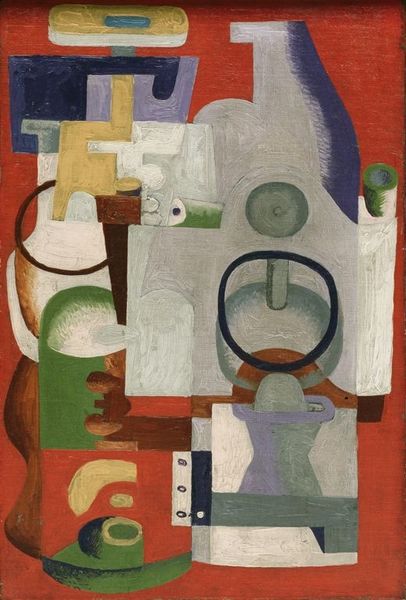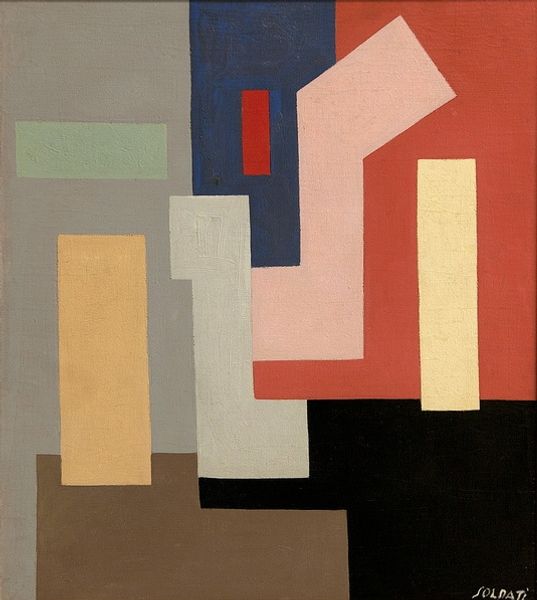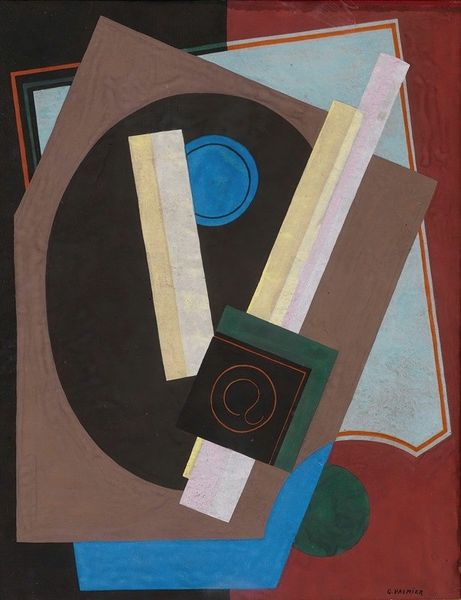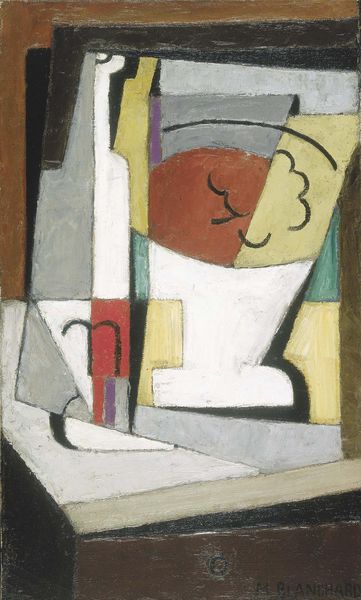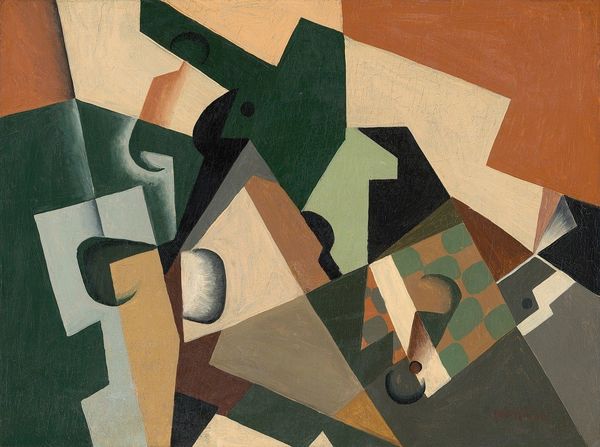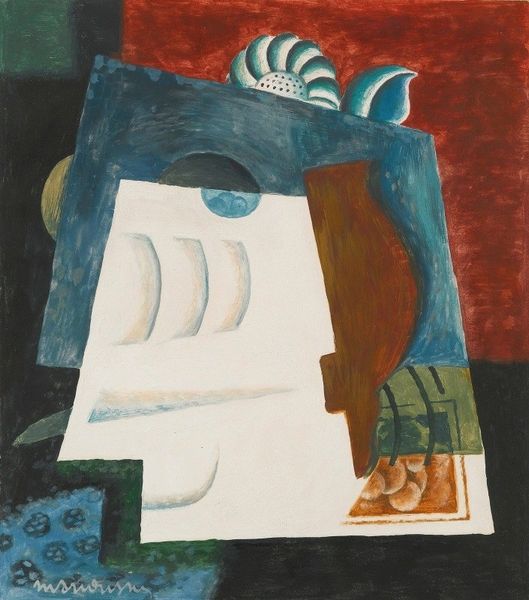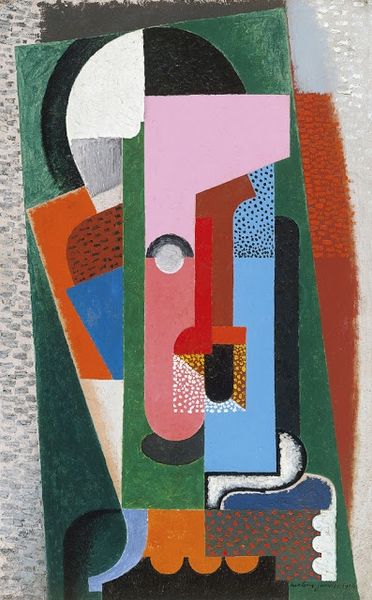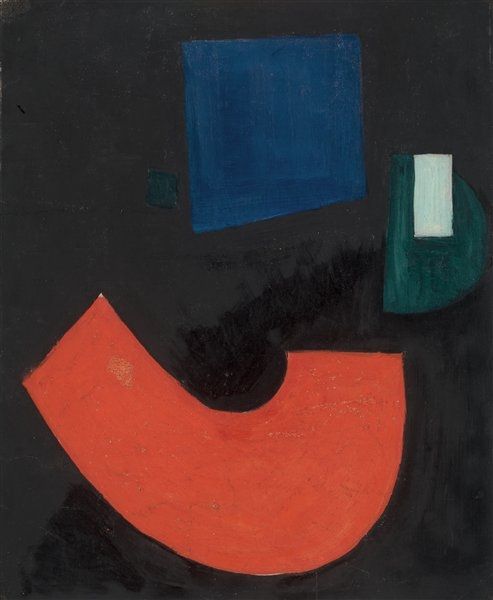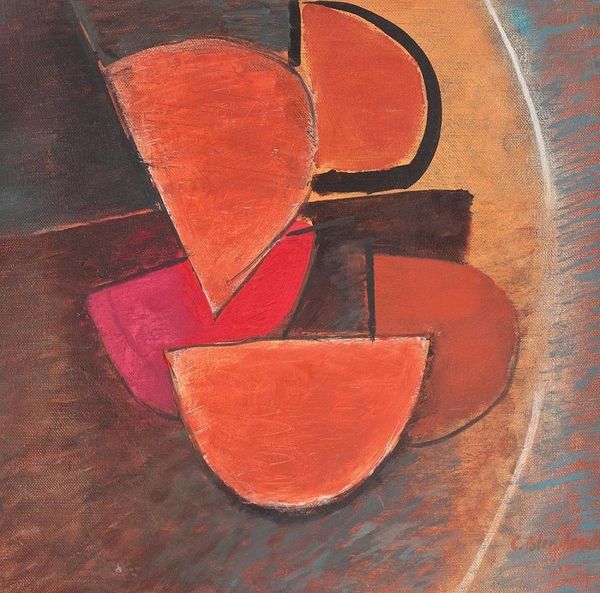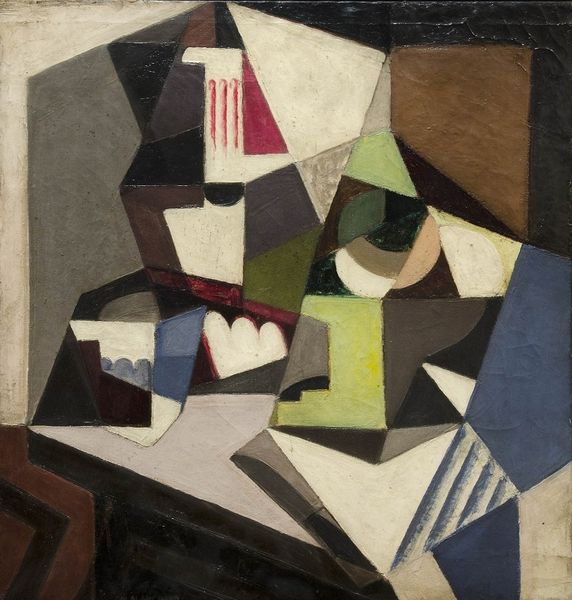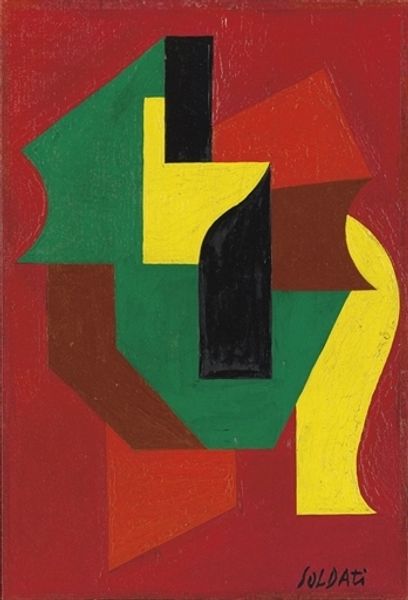
painting, oil-paint
#
cubism
#
painting
#
oil-paint
#
painted
#
oil painting
#
geometric
Copyright: Public domain
Editor: This is "Nimes" by Louis Marcoussis, painted in 1928. It's an oil painting, and my first impression is that the composition is deliberately challenging, like a puzzle of shapes and colors. What do you see in this piece? Curator: The lasting resonance of cubism, isn’t it intriguing? Consider the fragmented forms: the suggestion of objects—fruit, perhaps a glass—they are broken apart, presented from multiple viewpoints simultaneously. Think about what that does to our perception of reality. What kind of shared knowledge did Cubists expect from the audiences? Editor: Well, I suppose they assumed the viewer would understand the basic shapes, enough to reassemble them mentally. It's interesting to me that, even disassembled, I can still "feel" a still life. Is that what you mean about shared knowledge? Curator: Precisely. These visual cues operate almost like cultural shorthand. Marcoussis uses geometric forms, but embeds them within a long tradition. The “still life” speaks volumes: a sign of opulence, a token of life and death, or even just proof of good housekeeping. What story does it subtly tell, here? Editor: That's fascinating. It's like he's playing with symbols within symbols. It looks like this kind of art creates meaning between the artist, the object, and us as interpreters. Thank you! Curator: Absolutely! We use symbols constantly, and sometimes their origins are older than we realize. Art gives us a language to study the persistence of cultural memory. I appreciate you sharing your insights today.
Comments
No comments
Be the first to comment and join the conversation on the ultimate creative platform.
